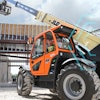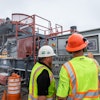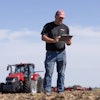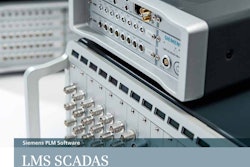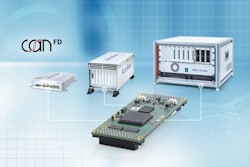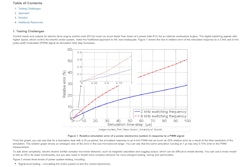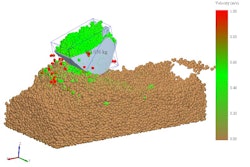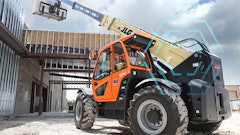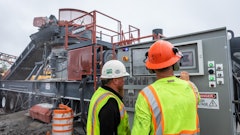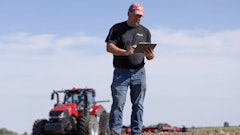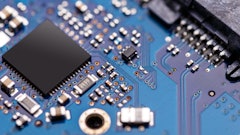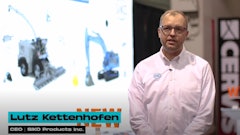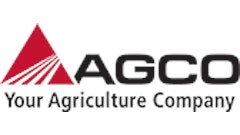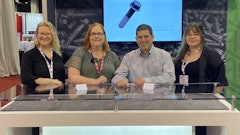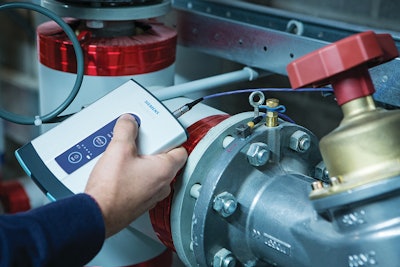
In the off-road vehicle space, and the agricultural machinery industry in particular, durability is one of the most important metrics for manufacturers to consider. Farm equipment is used in conditions that vary greatly from market to market, as well as the degree of roughness at which a farmer operates the machine.
Kverneland Group Kerteminde AS (Kverneland Group)—an international farming equipment company that develops, produces and distributes machinery and services for a broad range of products including seeders, foragers, balers, sprayers and electronic solutions for tractors and other ag machines—suspected that the existing durability testing process resulted in over-testing designs and was leading to results that were not indicative of the true durability of its products.
To overcome this issue, Kverneland Group adopted a testing system consisting of LMS SCADAS Recorder hardware (downloadable product information, 12030124), LMS Test.Xpress software (downloadable product information, 12030130) and LMS Tecware software from Siemens PLM Software (company information, 10839254). The newly acquired equipment will help engineers validate different load scenarios and design realistic lifetime tests. LMS SCADAS Recorder and LMS Test.Xpress are used jointly to collect dynamic load data during field and laboratory tests, and LMS Tecware is used to streamline the process of consolidating load data and analyzing durability characteristics.
Local demands
Agricultural machinery typically must withstand high loads, so loads must be measured accurately. For instance, with every cut, 50 to 60 kg (110 to 132 lbs.) of grass can flow through the mower. Two to three metric tons can flow through the machine every minute. Many local constraints exacerbate the need for extensive testing. Therefore, Kverneland Group is using Siemens PLM Software testing products to collect more data to determine a number of possible load profiles.
To illustrate the local nature of this issue, consider the following: crops are heavier in Ireland than in the Benelux. Clover is denser compared to grass. Some Asian countries harvest sorghum Sudan grass hybrids, a very thick type of crop almost like bamboo. Benelux farmers cut and harvest several times a year. Some American farmers cut only once a year. Kverneland Group exports to the United States, France, United Kingdom, Germany, Spain, Italy, Japan and Korea, so its equipment needs to operate effectively under a variety of conditions such as these.
Experience shows that the greatest damage can be caused by driving on a road. Modern tractors are more comfortable and less sensitive to noise and vibration. As a result, farmers tend to drive at excessive speeds on bumpy field roads, exposing the tractors to severe conditions.
New designs are also influenced by economic trends. With rising fuel prices, machines need to be as light and efficient as possible to reduce fuel consumption. Both the weight and size of the equipment need to be optimized.
It is critical that the Kverneland Group have a precise understanding of the lifetime loads its farming equipment will undergo to succeed at durability engineering. As such, testing teams determine dynamic loading through physical testing in the field, on the road and in the laboratory.
Collecting more proof points
By using LMS SCADAS Recorder, Kverneland Group has received detailed information about load profiles. Using these products increases the company’s knowledge of the load history, and enables it to reproduce more realistic load conditions and test according to the majority of load conditions.
Previously, Kverneland Group used manual testing with five or six points (typically, strain sensors) of reference on its test stand. Now strain gauge sensors are placed on up to 30 measuring points, providing much more accurate results. Consequently, Kverneland Group is able to perform:
- Practical measurements of how the equipment will react to field work,
- Practical measurements of how the equipment will react to road transport,
- Measurements of how the equipment will react to standardized bumps,
- An evaluation of results, determining how high the strain was on the equipment,
- An analysis of which sensor signals are most important, and
- A check on values used for accelerated lifetime testing.
Enhanced insight
The Kverneland Group has been recording time data in the field using the LMS SCADAS Recorder embedded global positioning system (GPS) sensor, and its engineers are now able to acquire the most diverse loading data from various strain, pressure, flow, position and acceleration sensors. They are able to visualize events on the map using LMS Tecware export to the Google Earth feature.
“Our engineers are very happy with the insight delivered by this information,” says Jan Vestergaard Madsen, head of the design department at Kverneland Group. “Over time, this improved insight will help define standard profiles to reproduce realistic tests in the lab.”
Henrik Christensen Aarenstrup, a project engineer at Kverneland Group, adds, “It is particularly easy to check values and to find back-measured data. The engineers get a complete overview of the measured data in the easiest way.” Engineers are able to accurately measure loads in various conditions, such as mowing with one side of the machine folded and mowing with unequally suspended machines. They are also able to perform direct measurement of loads for use in calculations, and use strain gauges and various sensors to measure the effect across a number of factors.
Kverneland Group engineers have already tried pressure, flow and temperature measurements for hydraulics applications and expect a lot from additional sensor information, such as measuring the hydraulic folding and unfolding of the machinery, which will provide more insight into the hydraulic forces on the equipment. Ultimately, they intend to use loading data as input for fatigue life analysis using finite element analysis (FEA).
Meanwhile, engineers continue to work on improving Kverneland Group’s durability engineering process, looking to add torque and power requirements and provide full information about the load history. The collected data can also be used as input for finite element modeling (FEM) and fatigue life prediction using Palmgren-Miner Rule (measuring damage accumulation). Since it’s impractical from a cost and time management perspective to travel around the world to collect information on every machine, Kverneland Group engineers use LMS Tecware to provide a verified test track or procedure that matches the customer’s usage.
As software and hardware tools and resources continue to advance, equipment and system engineers will be able to find new ways to continuously improve their products using new and more precise information gathered in faster and more reliable ways.


